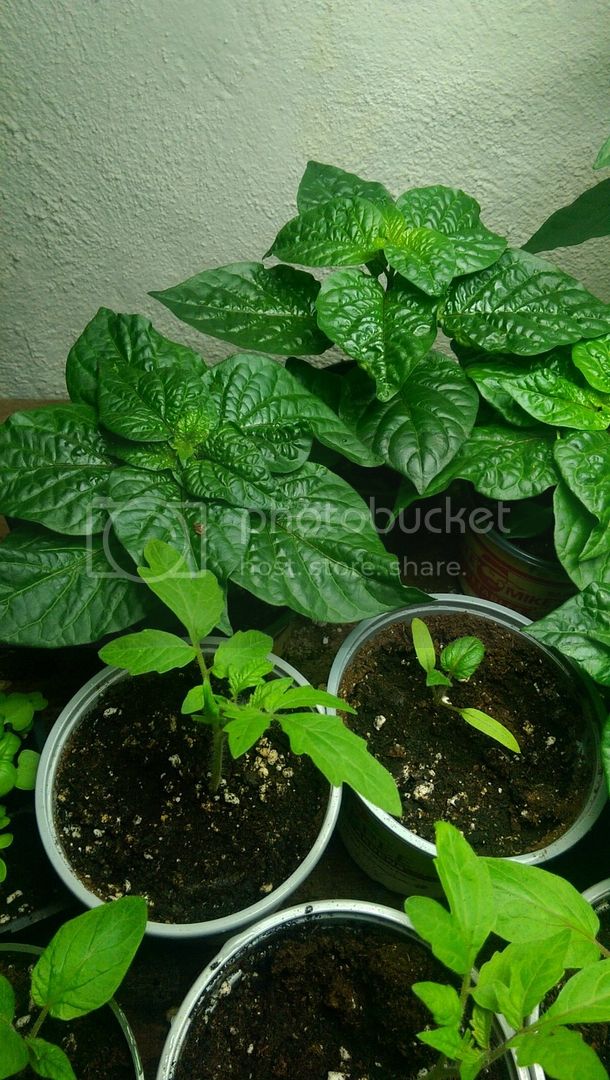interveinal chlorosis (chlorosis between the veins) = magnesium / K
see below from
http://hortipm.tamu.edu/ipmguide/nutrient/diagnosi.html
if that's not a reasonable explanation then i dont know what is. And just because you have good organic soil it does not mean you will forever be free from nutrient issues.
 Macronutrients:
Macronutrients:
Nitrogen(N) - Restricted growth of tops and roots and especially lateral shoots. Plants become spindly with gen eral chlorosis of entire plant to a light green and then a yellowing of older leaves which proceeds toward younger leaves. Older leaves defoliate early.
Phosphorus(P) - Restricted and spindly growth similar to that of nitrogen deficiency. Leaf color is usually dull dark green to bluish green with purpling of petioles and the veins on underside of younger leaves. Younger leaves may be yellowish green with purple veins with N deficiency and darker green with P deficiency. Otherwise, N and P deficiencies are very much alike.
Potassium(K) -
Older leaves show interveinal chlorosis and marginal necrotic spots or scorching which progresses inward and also upward toward younger leaves as deficiency becomes more sever.
Secondary Nutrients:
Calcium (Ca) - From slight chlorosis to brown or black scorching of new leaf tips and die-back of growing points. The scorched and die-back portion of tissue is very slow to dry so that it does not crumble easily. Boron deficiency also causes scorching of new leaf tips and die-back of growing points, but calcium deficiency does not promote the growth of lateral shoots and short internodes as does boron deficiency.
Magnesium (Mg) -
Interveinal chlorotic mottling or marbling of the older leaves which proceeds toward the younger leaves as the deficiency becomes more severe. The chlorotic interveinal yellow patches usually occur toward the center of the leaf with the margins being the last to turn yellow. In some crops, the interveinal yellow patches are followed by necrotic spots or patches and marginal scorching of the leaves.
Sulfur(S) - Resembles nitrogen deficiency in that older leaves become yellowish green and the stems become thin, hard, and woody. Some plants show colorful orange and red tints rather than yellowing. The stems, although hard and woody, increase in length but not in diameter.
Micronutrients:
Iron (Fe) - Starts with interveinal chlorotic mottling of immature leaves and in severe cases the new leaves become completely lacking in chlorophyll but with little or no necrotic spots. The chlorotic mottling on immature leaves may start first near the bases of the leaflets so that in effect the middle of the leaf appears to have a yellow streak.
Manganese(Mn) - Starts with interveinal chlorotic mottling of immature leaves and, in many plants, it is indistinguishable from that of iron. On fruiting plants, the blossom buds often do not fully develop and turn yellow or abort. As the deficiency becomes more severe, the new growth becomes completely yellow but, in contrast to iron necrotic spots, usually appear in the interveinal tissue.
Zinc (Zn) - In some plants, the interveinal chlorotic mottling first appears on the older leaves and in others, it appears on the immature leaves. It eventually affects the growing points of all plants. The interveinal chlorotic mottling may be the same as that for iron and manganese except for the development of exceptionally small leaves. When zinc deficiency onset is sudden such as the zinc left out of the nutrient solution, the chlorosis can appear identical to that of iron and manganese without the little leaf.
Boron (B) - From slight chlorosis to brown or black scorching of new leaf tips and die-back of the growing points similar to calcium deficiency. Also the brown and black die-back tissue is very slow to dry so that it can not be crumbled easily. Both the pith and epidermis of stems may be affected as exhibited by hollow stems to roughened and cracked stems.
Copper(Cu) - Leaves at top of the plant wilt easily followed by chlorotic and necrotic areas in the leaves. Leaves on top half of plant may show unusual puckering with veinal chlorosis. Absence of a knot on the leaf where the petiole joins the main stem of the plant beginning about 10 or more leaves below the growing point.
Molybdenum(Mo) - Older leaves show interveinal chlorotic blotches, become cupped and thickened. Chlorosis continues upward to younger leaves as deficiency progresses.








